
In this activity students will connect primary sources with specific sections of the Constitution.
- Subject:
- History
- Social Science
- Material Type:
- Activity/Lab
- Primary Source
- Provider:
- National Archives
- Provider Set:
- DOCSTeach
- Date Added:
- 05/10/2024

In this activity students will connect primary sources with specific sections of the Constitution.
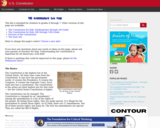
This webpage explains the basics of the U.S. Constitution at an upper elementary and middle school level. It includes the following sections: Basics, History, Amendments, Slavery, Women, Bill of Rights, How it all Works. The page does have advertisements as well, so it is best used as a teacher resource.
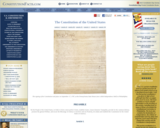
Read the United States Constitution
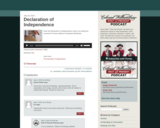
Since 2005, the "Past and Present" podcast from Colonial Williamsburg has taken you behind the scenes to meet interpreters, chefs, tradesmen, musicians, historians, curators, and more. We offer two versions of our podcast: one that's audio-only and one that includes a slideshow. In this episode: Hear the Declaration of Independence read in its entirety by renowned Thomas Jefferson interpreter Bill Barker.

In all, 70 delegates were appointed to the Constitutional Convention, but out of that 70 only 55 attended, and only 39 actually signed. Some simply refused, others got sick, still others left early.
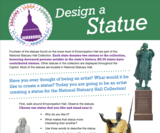
What would it be like to create a statue? Today you are going to be an artist creating a statue for the National Statuary Hall Collection!
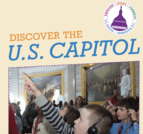
With engaging activities related to locations in the Capitol as well as American history in general, Discover the U.S. Capitol is intended for upper-level elementary-school-aged students who can use it before or after they visit the Capitol.

Students will examine aspects of Article II of the Constitution for specific information related to the requirements for and method of electing the president.

In this one-minute video, students learn about the executive branch of the United States government. A host explains the qualifications and expressed powers of the presidency, and students consider what informal powers the president has.
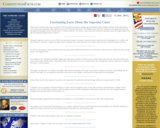
A list of fascinating facts about the Supremem Court of the United States of America
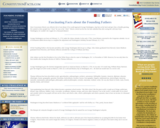
A list of fascinating facts about the United States Constitution
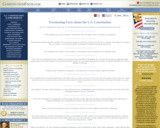
A list of fascinating facts about the United States Constitution

Why do we have the First Amendment, and what freedoms does it guarantee? In this one-minute video, students learn about the five freedoms outlined in the amendment. A host explains each of them and identifies some of their limitations.
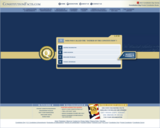
Take the Founding Fathers quiz to find out how much you know about the Founding Fathers of the United States of America.

In colonial Virginia, those that followed religions other than the Church of England were considered dissenters.”

General George Washington held a rally to launch his 2016 campaign to promote participation in the democratic process. Follow along at itstartshere2016.org
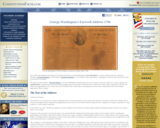
One of the most significant documents in Constitutional History, George Washington's Farewell Address, is a letter written by the first American President, George Washington, with the help of Alexander Hamilton, to "The People of the United States." Washington wrote the letter near the end of his second term as President.

A Short Activity for Fifth Grade
Question: How does the U.S. Constitution organize the government?
Note: The "Guidance on Government: Federal Edition" Powerpoint, also available in eMedia, was created to accompany this lesson plan.

A Short Activity for Fifth Grade
Question: How does the U.S. Constitution organize the government?
Note: The "Guidance on Government: Federal Edition" lesson plan, also available in eMedia, was created to accompany this PowerPoint.

Thomas Jefferson explains the importance of the Bill of Rights.
Colonial Williamsburg's Center for Teaching, Learning, and Leadership provides American history and civics materials nationwide. For more great videos, lesson plans, interactive games and more, create a free account on the Colonial Williamsburg Education Resource Library: resourcelibrary.history.org.